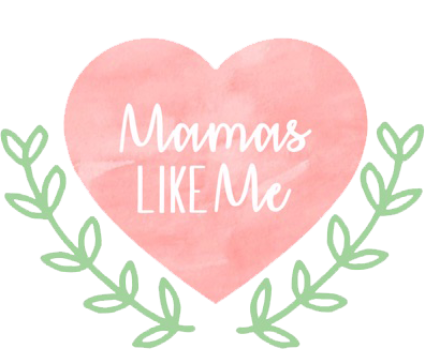There’s something magical about the art of baking. The aroma of freshly baked bread, the sight of golden-brown cookies, and the satisfaction of slicing into a moist chocolate cake can lift spirits like nothing else. But achieving baking perfection requires more than following a recipe—it’s a blend of science, intuition, and a few insider tricks that can turn good treats into extraordinary ones. Whether you’re a beginner or a seasoned baker, these tips and techniques will help you create flawless desserts every time.
Understanding the Basics
Before diving into advanced techniques, it’s crucial to grasp the foundational principles of baking. Baking is essentially chemistry in action—ingredients interact in precise ways to produce the textures, flavors, and appearances we love. Flour provides structure, sugar sweetens and caramelizes, fats add richness, eggs bind ingredients and create lift, and leavening agents like baking powder or yeast make baked goods rise.
Measuring ingredients accurately is the first step toward success. Unlike cooking, where a pinch or dash might work, baking demands precision. Use a digital scale for best results, or measure dry ingredients with a level spoon and liquids in a clear measuring cup. Small variations can drastically affect the outcome.
Perfecting Your Mixing Techniques
How you combine ingredients can make or break a bake. Overmixing can develop gluten in flour-heavy recipes, resulting in dense, chewy bread or tough cakes. Undermixing, on the other hand, can leave lumps of flour or uneven texture. A gentle folding motion is ideal for delicate batters like chiffon cakes or soufflés, while creaming butter and sugar together creates a light, airy texture perfect for cookies and cupcakes.
Temperature matters too. Butter and eggs should generally be at room temperature unless specified otherwise. Softened butter blends more smoothly with sugar, trapping air to make cakes fluffy, while room-temperature eggs incorporate more easily into batters.
The Secret to Moist Cakes
Few things are more disappointing than a dry cake. The secret to moisture lies in balancing fats and liquids. Ingredients like yogurt, sour cream, or buttermilk add tenderness and richness. Avoid overbaking, as even a minute too long can dry out your masterpiece. Test cakes with a toothpick inserted in the center—it should come out with a few moist crumbs but not wet batter.
Additionally, brushing simple syrup over layers of cake before frosting can add both moisture and flavor. A hint of vanilla, almond, or citrus syrup can elevate a simple sponge into a decadent treat.
Cookies, Brownies, and the Art of Texture
Texture is everything in cookies and brownies. For soft and chewy cookies, use more brown sugar than white, and don’t overbake. For crisp cookies, increase white sugar and bake slightly longer. Chilling dough before baking can prevent excessive spreading, resulting in perfectly shaped treats.
Brownies require a balance between cake-like and fudgy textures. Melted chocolate adds richness, while precise baking ensures they remain gooey without collapsing. Don’t be tempted to open the oven frequently, as this can cause uneven cooking.
Mastering Bread and Pastry
Baking bread and pastry may seem intimidating, but with patience and technique, anyone can achieve bakery-worthy results. Yeast breads require proofing—allowing dough to rise twice ensures a light, airy structure. Pay attention to water temperature; yeast thrives in warmth but dies in extreme heat. Using high-performance Tom Chandley ovens can make a noticeable difference, providing consistent heat that ensures even baking and perfectly golden crusts. For pastry, keeping butter cold is essential. Cold butter creates pockets of steam as it bakes, producing flaky layers. When making puff pastry or croissants, handle the dough gently and allow adequate resting time to prevent tough textures.
Flavor Boosters and Enhancements
While technique is key, flavor makes your creations unforgettable. Don’t be afraid to experiment with extracts, spices, zest, or liqueurs. Toasted nuts, dried fruits, or a pinch of salt can elevate even the simplest cookies. Incorporating contrasting textures—like a crisp topping on a soft cake or a creamy filling in a tart—creates depth and interest.
Temperature control is also crucial for chocolate. Melting chocolate gently over a double boiler or using a microwave in short bursts prevents scorching and preserves smoothness. Tempering chocolate ensures a glossy finish that snaps delightfully when broken.
Presentation Matters
Baking isn’t just about taste; appearance counts too. Even simple desserts can look professional with a few finishing touches. Dusting powdered sugar, drizzling chocolate, or adding fresh fruit enhances visual appeal. For layered cakes, using a turntable and a bench scraper can create sleek, smooth frosting.
Don’t underestimate the power of portioning. Uniform cookies, evenly sliced bars, and consistent cupcakes not only look polished but ensure even baking. Investing in quality pans and tools makes a noticeable difference in your finished product.
Troubleshooting Common Baking Problems
Even experienced bakers encounter hiccups. Here are some common issues and solutions:
- Dense cakes: Likely due to overmixing, expired leavening agents, or too much flour.
- Soggy bottoms: Usually from underbaking or excess moisture in fillings.
- Cracked bread: Oven too hot or dough not rested enough.
- Flat cookies: Butter too soft or dough not chilled.
Keeping a baking journal helps track what works and what doesn’t, allowing you to tweak recipes for perfect results every time.
The Joy of Baking
Ultimately, baking is about creativity and enjoyment. While precision matters, don’t let mistakes discourage you—they’re opportunities to learn and improve. Celebrate small victories, share your treats with loved ones, and savor the process as much as the product.
By mastering the basics, paying attention to technique, experimenting with flavors, and practicing patience, you can transform your kitchen into a haven of Baking Bliss. Every batch is a chance to create something extraordinary, and with these tips, you’re well on your way to making perfect treats that delight the senses and warm the heart.



